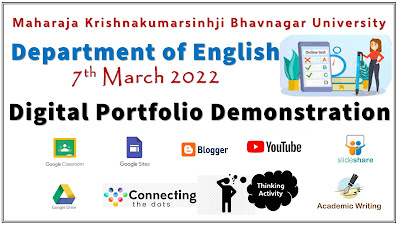Welcome to Project Blended Learning 2010-20!
Note: Click on the below given web-link to view students' updated ePortfolios / Digital Portfolios
On this site, which is a sort of digital locker of students, you will find records of all curricular, co-curricular and other activities of students of following batches:
The purpose of this site - http://sites.google.com/site/projectblendedlearning2012 :
1. To share action research carried out at Department of English,
Bhavnagar University (Gujarat - India).
2. To display the projects submitted by students.
3. To present the outcomes of the experiment on Blended Learning.
 |
| Project Blended Learning 2012 |
The feedback given by students can be read here.
* These charts displays the percentage variation in B.A. (Bachelor of Arts) and M.A. (Master of Arts). Almost all the students, except for one in each batch, displayed good improvement in thier University examination. These real examinations (and not the faked one like pre-post-tests) are used as substantial proof to prove that students show remarkable improvement in their learning capacities when face to face teaching is blended with technology based learning.
* In the below given chart (Batch 2010-12), we can see that the percentage of only one student decreased as compared to that of BA. The green bars reflects the percentage of MA and blue that of BA.
 |
| Advantage Blended Learning (2010-12) All students improved their performance in real-life University exam |
 |
| Advantage Blended Learning (2011-13) All students improved their performance in real-life University exam |
 |
| Advantage Blended Learning (2012-14) All students improved their performance in real-life University exam |

















